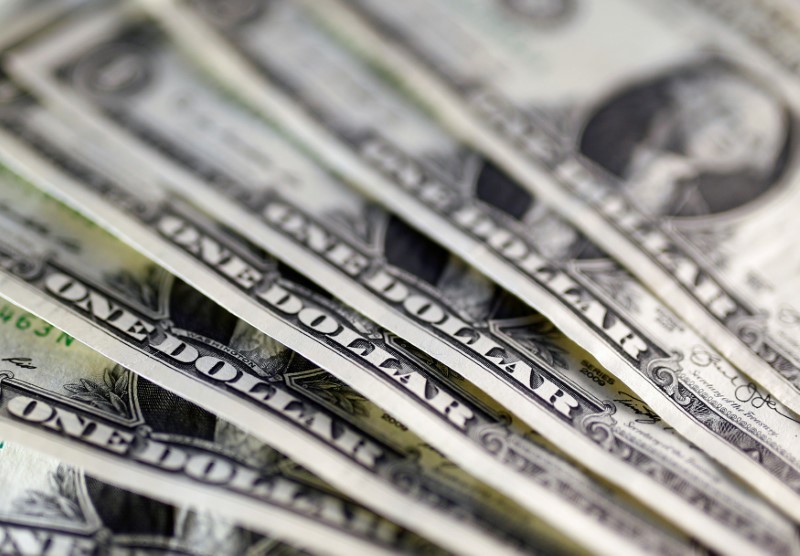By Patrick Graham
LONDON (Reuters) - The dollar steadied against a basket of currencies on Tuesday, still stuck below highs hit in December and January after two weeks in which expectations for a rise in U.S. interest rates this month have soared.
A fall for sterling to a seven-week low and a yo-yo performance for the Australian dollar after a meeting of the country's Reserve Bank grabbed the most attention in a morning session in Europe marked by minimal moves in major currencies.
The peaking of a year-long surge in metals prices has seen the Aussie fall back and it was the hardest hit of the major currencies in last week's swift move to price in a March rise in Federal Reserve interest rates.
Against other currencies, however, the U.S. dollar has done less well, failing to break conclusively below $1.05 to the euro or 112 to the yen.
"If you had told me (two weeks ago) expectations for a March hike would reach almost 100 percent I would have said we would have been well below $1.05," said Niels Christensen, a strategist with Nordea in Copenhagen.
"The disappointment in that move caused more profit-taking on Friday but I don't see the euro moving much higher from here."
The dollar index (DXY) rose less than 0.1 percent to 101.72 by 1100 GMT (0600 EST), trading broadly flat at 113.92 yen and $1.0576 per euro.
Against sterling, buffeted by another round of downbeat signals on retail sales and consumer demand, it gained 0.3 percent to trade under $1.22
Deutsche Bank (DE:DBKGn) strategist Oliver Harvey said he expected the pound to suffer further in the next month as Britain launches talks with Brussels on its planned departure from the European Union.
"Market tension is starting to pick up again. The politics should be a catalyst, particularly if the negotiations start off on the wrong note," he said.
"People have talked about a bounce back in sterling (since October), but really it has been a story of massive underperformance. It is the only major currency down against the dollar this year."
Comments overnight by Trump administration trade adviser Peter Navarro pulled attention back to concerns over the White House's attitude to trade and the dollar as officials prepare for Group of 20 meetings later this month.
Navarro said on Monday that the $65 billion U.S. trade deficit with Germany was "one of the most difficult" trade issues, and that bilateral discussions were needed to reduce it outside of European Union restrictions.
He has previously said an undervalued euro gives Germany an edge over its trading partners.
Trump's policy pledges on domestic spending and taxation are generally thought to point to a stronger dollar but both the president and a number of his officials have indicated dissatisfaction with the current strength of the greenback.
The U.S. publishes trade balance figures on Tuesday. One surprise during Asian time was a rise in China's currency reserves, which had been expected to fall again sharply in February.
"Given negative valuation effects this suggests there wasn't any intervention to support the yuan in February," said Societe Generale (PA:SOGN) strategist Kit Juckes. "That helps Asian currencies for now, including the Aussie."
The Australian dollar, up as much as 0.6 percent in Asian time, was just 0.2 percent higher at $0.7594 by 1117 GMT.

For Reuters Live Markets blog on European and UK stock markets see reuters://realtime/verb=Open/url=http://emea1.apps.cp.extranet.thomsonreuters.biz/cms/?pageId=livemarkets